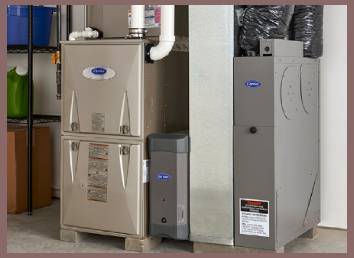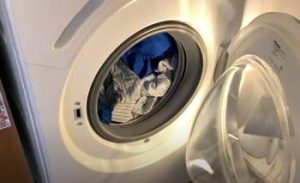When it comes to keeping your home warm during the cold months, a crucial decision lies in the type of furnace to install. It’s often a debate between the 1-stage and 2-stage furnace.
These furnaces have their unique characteristics, advantages, and disadvantages, making the choice a matter of preference and specific needs.
A Brief Comparison Table
| 1-Stage Furnace | 2-Stage Furnace | |
| Operation | Operates at full capacity whenever it’s on | Operates at two levels – high (100%) and low (60-70%) |
| Cost | Generally less expensive upfront | Higher initial cost due to more advanced technology |
| Energy Efficiency | Less energy efficient due to full-capacity operation | More energy efficient as it runs most of the time at the lower capacity |
| Heating Consistency | May lead to temperature swings due to on-off nature | Provides more consistent heating and reduces hot and cold spots |
| Noise Level | Could be noisier when operating at full capacity | Generally quieter, especially when running at the lower stage |
| Maintenance | Simpler design makes for easier troubleshooting and repair | More complex system can make maintenance more challenging when issues arise |
Understanding the Basics: What are 1-Stage and 2-Stage Furnaces?
A 1-stage furnace, as its name suggests, operates at a single, full capacity level. Once the thermostat signals a temperature drop below the set level, the furnace kicks in at 100% capacity until it reaches the desired temperature.
On the other hand, a 2-stage furnace offers a more flexible approach. It has two operational stages – high for extremely cold conditions and low for milder temperatures. The low stage typically operates at about 60-70% capacity, providing more consistent warmth throughout your home.
The Upside of a 1-Stage Furnace

The first thing you’ll notice about the 1-stage furnace is its simplicity, making it less prone to breakdowns. It is also relatively less expensive than the 2-stage model, which can be a significant determinant for those on a tight budget.
What’s more, a 1-stage furnace provides rapid heat, perfect for quickly raising the temperature of your home during extremely cold spells. There’s no denying that it packs a punch when it comes to heating your space.
The Downside of a 1-Stage Furnace
The primary con of a 1-stage furnace is its lack of energy efficiency. Given that it operates at full capacity, it consumes a lot of energy, which can add up on your energy bills over time.
Another issue arises in the form of inconsistent heating. Because of its all-or-nothing nature, it tends to create temperature swings in your home. You may experience periods of being too hot before the furnace kicks off, followed by periods of being too cold before it turns back on.
Also Read: About HydraFlex Waterproofing
The Perks of a 2-Stage Furnace

In contrast, a 2-stage furnace excels in energy efficiency. It spends most of its time in the energy-saving low stage, which is sufficient for milder days.
It also offers more consistent warmth. By running more frequently at a lower capacity, it better distributes heat throughout your home, reducing hot and cold spots.
Moreover, the 2-stage furnace operates quietly compared to its single-stage counterpart. The blower fan tends to be less noisy when running at the lower stage, contributing to a quieter and more peaceful home environment.
The Drawbacks of a 2-Stage Furnace
Despite its benefits, the 2-stage furnace has a higher initial cost. The more complex technology and dual-stage functionality contribute to a heftier price tag.
Also, its complexity can lead to more maintenance issues compared to the single-stage model. While it’s not necessarily more prone to breaking down, fixing it can be more complicated when problems do arise.
FAQs on 1-Stage and 2-Stage Furnaces
A 2-stage furnace isn’t necessarily better; it’s different. It offers more consistency and efficiency, but at a higher price. The choice depends on your budget, heating requirements, and energy efficiency goals.
The primary advantage of a two-stage gas furnace is its energy efficiency and consistent heating. It offers more comfort, operates more quietly, and can potentially save you money in the long run.
As of now, there are no concrete plans to phase out single-stage furnaces. They continue to be a popular choice for homeowners due to their lower upfront costs and simplicity.
The primary difference lies in their operation. A 1-stage furnace operates at full capacity whenever it’s running, while a 2-stage furnace has two levels of operation – high and low – providing more flexible and efficient heating.
A 2-stage furnace can be worth the extra cost if you value energy efficiency and consistent heating. While the initial investment is higher, it can lead to savings on your energy bills in the long run.
Not necessarily. While 2-stage furnaces are more complex than 1-stage models, they are not inherently more prone to breakdowns. However, when issues arise, they can be more challenging to fix due to their complexity.
Also Read: About Pros And Cons Of Evolve Water Softener
Wrapping it up: Choosing Between a 1-Stage and 2-Stage Furnace
Choosing between a 1-stage and 2-stage furnace ultimately comes down to balancing your needs and resources. If your focus is simplicity, lower upfront costs, and powerful heating, a 1-stage furnace might be the way to go.
However, if energy efficiency, consistent heating, and noise reduction are more important to you, and you’re willing to invest a bit more upfront, a 2-stage furnace could be an excellent choice.
Remember, it’s crucial to consider your specific needs, budget, and the climate in your area. Whether you choose a 1-stage or 2-stage furnace, ensure it meets your household’s needs and provides you with the comfort you desire during those cold winter months. A little bit of foresight can save a lot of hassle and ensure you stay warm and cozy all winter long.



